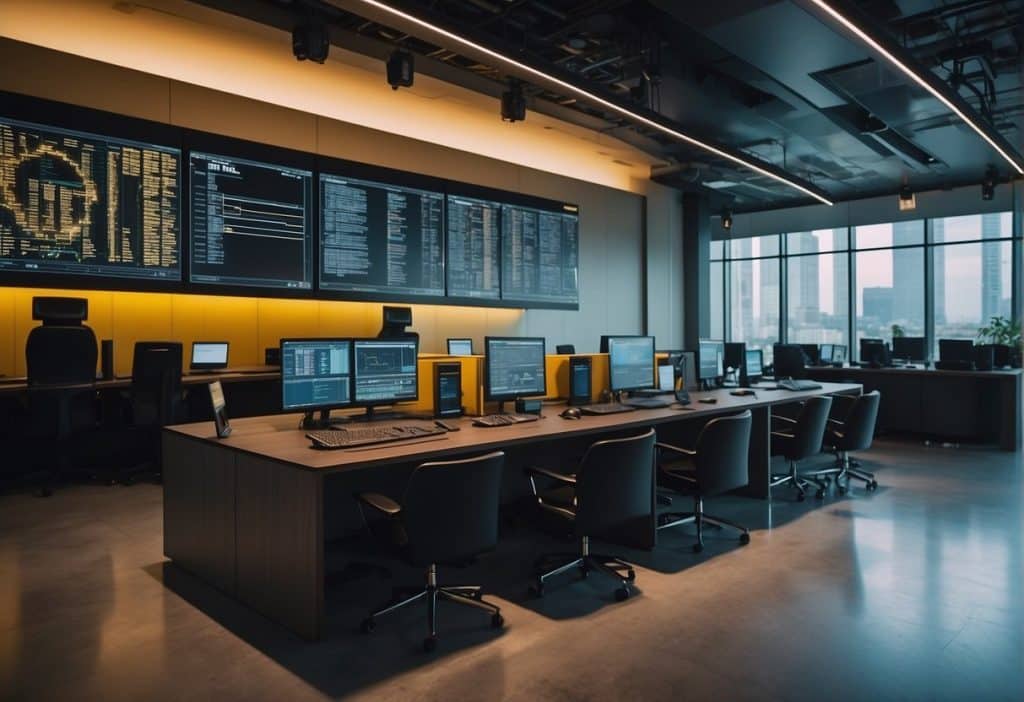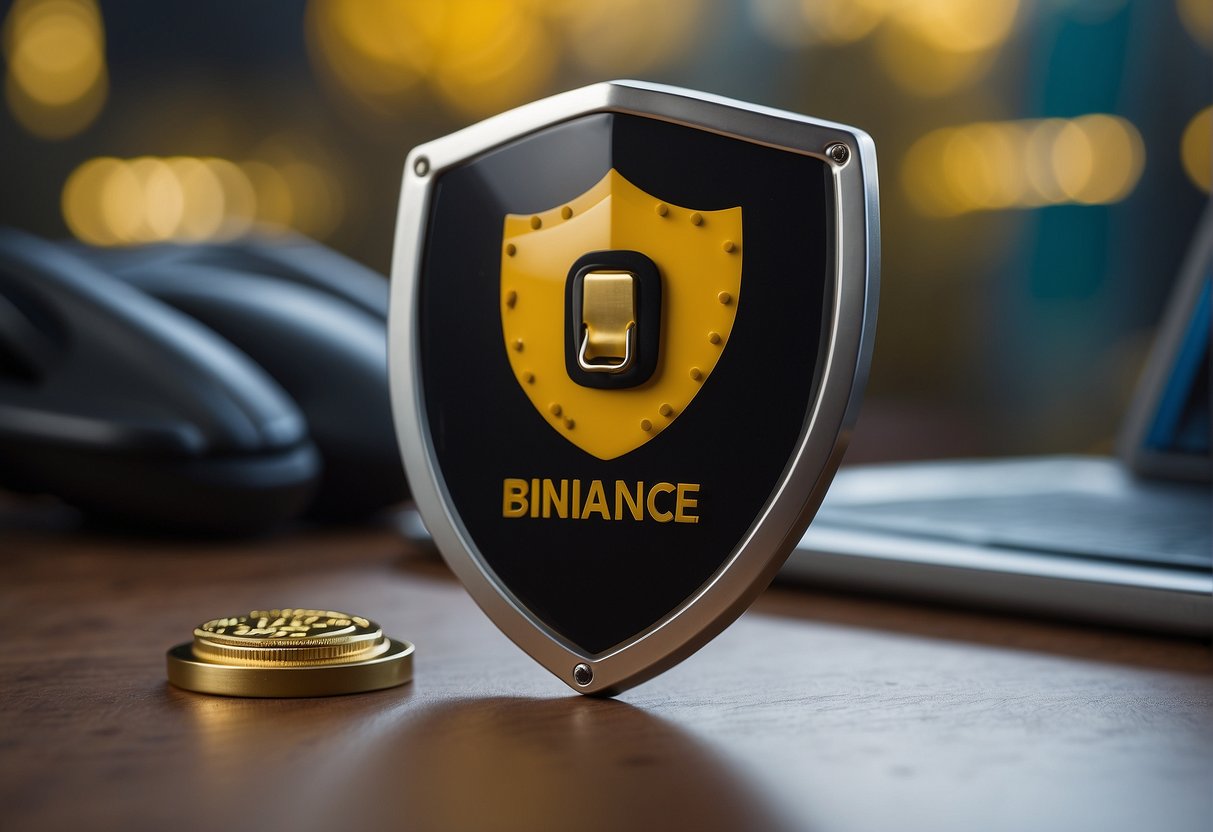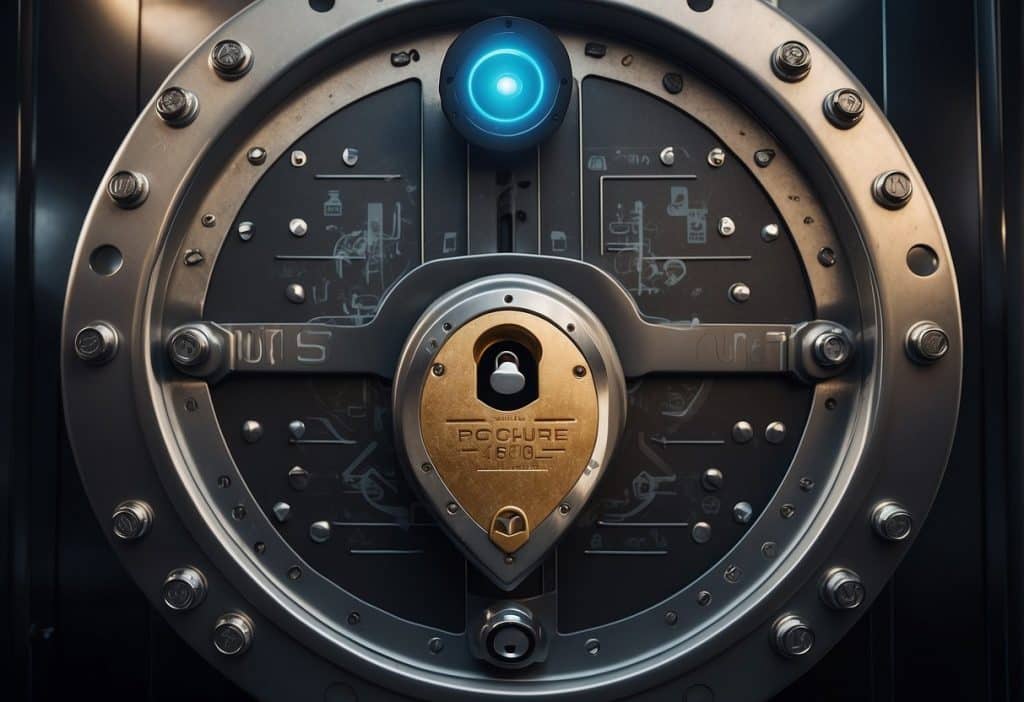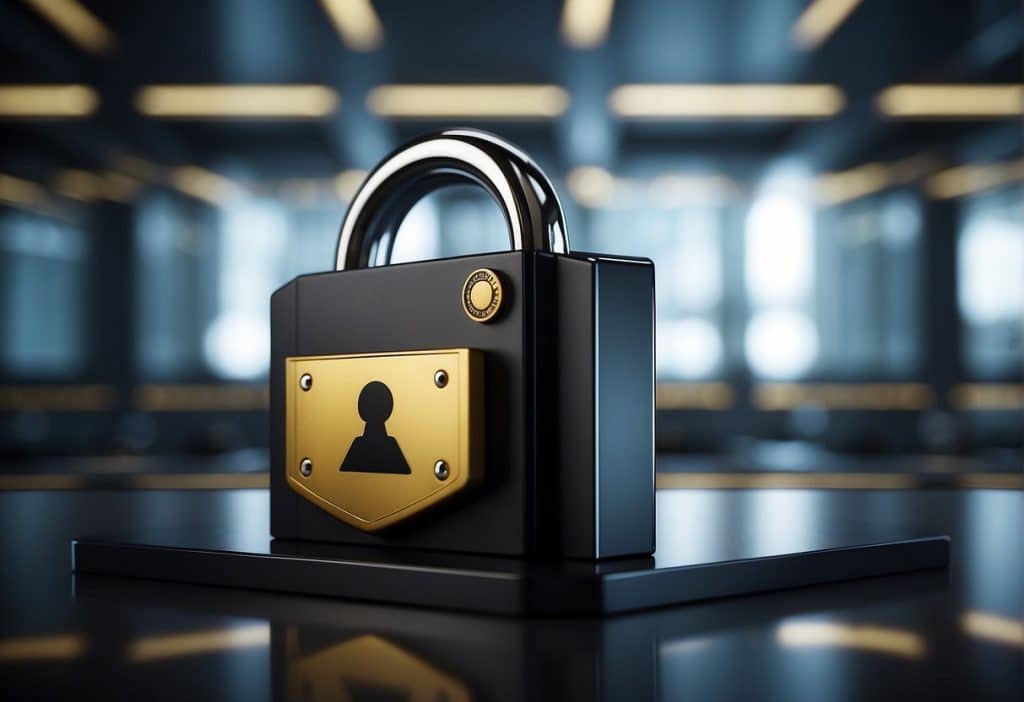When engaging with cryptocurrency exchanges, security is a top priority due to the digital nature of assets. Binance, one of the world’s leading cryptocurrency exchanges, commits to security protocols and systems designed to protect users’ funds and personal data. The exchange employs real-time monitoring and uses algorithms to detect unusual activities, which, if detected, can lead to a temporary freeze on withdrawals to prevent unauthorized access.

As regulators worldwide are increasingly scrutinizing the operations of cryptocurrency platforms, Binance has taken steps to comply with regulatory requirements, despite facing some challenges in this area. To enhance financial security, Binance established the Secure Asset Fund for Users (SAFU), which serves as a reserve fund to protect users’ investments in case of security breaches. The platform balances these measures with a user-friendly experience, offering a wide selection of cryptocurrencies and relatively low fees on trades.
Key Takeaways
- Binance enforces advanced security measures, like real-time monitoring, to safeguard your transactions and accounts.
- The exchange is proactively enhancing regulatory compliance and has established a dedicated fund (SAFU) to protect user assets.
- Despite strict security protocols, Binance remains committed to a smooth user experience with a broad cryptocurrency selection and low trading fees.
NOT YET A BINANCE USER?
Join today with the Binance Referral Code for exclusive benefits or read our Binance Review to learn why Binance is the right exchange for you!
GET UP TO 50% OFF TRADING FEES WITH THE CODE “WUPBLUYN”
Understanding Binance
Binance is a significant player in the cryptocurrency exchange market, established by Changpeng Zhao, commonly known as CZ. It has rapidly grown into one of the world’s leading platforms since its inception in 2017. Binance is known for its high trading volume, facilitating a wide array of transactions daily for its extensive user base.
When you trade on Binance, you’re engaging with a platform that supports a diverse selection of cryptocurrencies. The exchange offers various services, including trading, staking, and an option to earn interest through savings accounts.
Here are some of the features Binance provides for your transactions:
- Security Measures: Binance implements numerous security protocols, such as two-factor authentication (2FA), to protect your account.
- BNB: As a Binance user, you have the option to use Binance Coin (BNB), which is the platform’s native cryptocurrency, often used to pay for trading fees at a discounted rate.
- User Assistance: Binance offers customer support through multiple channels and ensures platform accessibility through its mobile app.
Binance sustains itself as a robust platform by combining proactive safety measures, user-focused services, and continuous technological advancement.
Security Protocols and Systems

In securing your assets on Binance, crucial security protocols and systems are implemented to mitigate the risk of unauthorized access and enhance the safety of your cryptocurrency holdings.
Two-Factor Authentication (2FA)
Your account’s security is reinforced with Two-Factor Authentication (2FA), which requires a second form of verification in addition to your password. This could be a code from an app like Google Authenticator or a text message to your phone, ensuring that only you have access to your account even if someone discovers your password.
Address Whitelisting
Address Whitelisting is a powerful security feature that allows you to create a list of withdrawal addresses that are the only ones you can send your funds to. When you enable this feature, even if hackers compromise your account, they cannot withdraw your funds to an unlisted address without additional verification.
Cold Wallet Storage
To protect funds from online threats, Binance utilizes Cold Wallet Storage. These are wallets that are not connected to the internet, which significantly reduces the risk of your assets being accessible to hackers. Binance moves a majority of customer funds into these cold wallets, away from online systems and potential security breaches.
Regulatory Compliance

As you approach the topic of Binance’s safety, understanding its stance on regulatory compliance is crucial.
Global Compliance
Binance has shown a commitment to abiding by international regulatory requirements. In its efforts to adapt to the ever-evolving financial landscape, your security and trust are prioritized through substantial investments in compliance technology. For instance, the exchange allocated $213 million in 2023 alone for this purpose, aiming to meet various international regulations.
US Specific Regulations
In the United States, Binance operates a separate platform known as Binance.US, which is tailored specifically to comply with U.S. laws and regulations. Although Binance has faced challenges with state-specific regulations, in New York and Texas for example, it continues to navigate the complex environment with a focus on meeting the requirements laid out by bodies like the Securities and Exchange Commission (SEC). Your awareness of Binance’s effort to align with U.S. regulatory frameworks can reinforce your confidence in the platform’s security measures.
Platform and Fund Security

Security is a paramount concern when engaging with cryptocurrency exchanges. Binance emphasizes robust protective measures to safeguard your funds and personal data.
Secure Asset Fund for Users (SAFU)
In July 2018, Binance established the Secure Asset Fund for Users (SAFU), a dedicated emergency insurance fund. This fund accumulates resources via a small percentage of all trading fees. In the event of a security breach, SAFU aims to cover the financial loss inflicted upon users, ensuring that your funds are backed by an extra layer of protection.
Insurance Protections
Binance partners with various insurance companies to offer additional layers of security to your assets. These insurance policies are intended to act as a safety net, providing compensation for any potential losses due to unforeseen breaches or system failures. Your funds on the Binance exchange are thus secured not only by digital protections but also by traditional financial safeguards.
Security Breach History
Despite rigorous security measures, Binance has faced incidents in the past where user funds were compromised:
- May 2019: Hackers withdrew 7,000 BTC, valued at $40 million at the time. Binance used SAFU to fully compensate affected users.
- No subsequent breaches with user fund loss: As of the current date, Binance has successfully thwarted further attempts, demonstrating the effectiveness of their enhanced security protocols.
Binance’s transparent approach to dealing with such incidents shows a commitment to user security and continuous improvement of their protective measures.
Financial Safeguards

When considering the safety of using Binance, it’s important to understand the financial mechanisms in place such as trading fees and the measures ensuring withdrawal and transaction security.
Trading Fees
Binance charges a fee for every trade you make on the platform. These fees differ based on whether you’re a maker or a taker in the trade. A maker is someone who provides liquidity by placing a limit order under the ticker price for a buy and above the ticker price for a sell, while a taker completes orders at market price. Here’s a brief outline:
- Maker Fee: 0.1% (may be lower depending on the trading volume and BNB balance)
- Taker Fee: 0.1% (similarly can be reduced)
Binance’s fee structure is designed to incentivize market makers who add liquidity to the market, as their fees are often lower than those of takers.
Withdrawal and Transaction Security
Binance ensures the security of your withdrawals and transactions through a series of robust measures:
- Two-Factor Authentication (2FA): Before any withdrawal, you’re required to confirm your identity using 2FA, which significantly reduces the risk of unauthorized access.
- Email Confirmations: You receive email confirmations for withdrawals to verify that you initiated the transaction.
- Whitelisting Addresses: You have the option to whitelist certain withdrawal addresses, allowing funds to be withdrawn only to those addresses.
- Advanced Data Encryption: Your transaction data is encrypted, providing an additional layer of security against potential breaches.
Binance continues to evolve its security measures to protect your financial transactions, ensuring that your crypto assets are handled securely at every step of the trading and withdrawal process.
User Experience
When trading on Binance, you expect a platform that balances ease of use with advanced financial tools. User experience is tailored to help you manage your finances efficiently, whether you are on your mobile device or utilizing customer support services.
Mobile App Functionality
Binance’s mobile app aims to consolidate comprehensive trading features into a portable format. You can expect:
- Ease of Navigation: Menus and tools are designed to be intuitive for beginners.
- Advanced Trading Options: For the experienced trader, detailed charting and analysis tools are accessible.
- Notifications: Real-time alerts keep you updated on market movements and the status of your trades.
- Security: Fingerprint and face recognition options enhance the safety of your transactions.
Customer Support Services
Customer support is a critical aspect of your overall experience on Binance. Key services include:
- Help Center: A resource repository for immediate answers to common queries.
- Live Chat & Email: Direct support is available, with a focus on timely and helpful responses.
- Community Forums: Engage with other users for crowd-sourced assistance and tips.
Your interactions with Binance’s customer support aim to streamline problem resolution and service inquiries, contributing to a reliable trading environment.
Investor Perspectives
As an investor, it’s crucial to examine both the range of investment options a platform offers and its standing within the marketplace relative to its competitors. These factors can significantly influence your experience and success in cryptocurrency trading.
Investment Products and Services
Binance.US provides a broad spectrum of investment products and services to cater to your diverse needs. It supports a variety of cryptocurrencies, making it possible for you to trade major coins as well as select altcoins. They also offer tools that can accommodate your different trading strategies, whether you are a day trader or looking for long-term holdings.
- Supported Cryptocurrencies: With Binance.US, you have access to trade several cryptocurrencies.
- Trading Tools: The platform includes advanced charting tools, price alerts, and order types to enhance your trading decisions.
Additionally, although Binance.US is not covered by the Securities Investor Protection Corporation (SIPC), which typically protects investors up to $500,000 in total cash and securities loss, their commitment to security can play a vital role in safeguarding your investments.
Market Position and Competitors
Your understanding of Binance.US’s market position is essential when assessing its safety. Binance.US operates as one of the largest cryptocurrency exchanges globally, which speaks to a certain level of trust and credibility among users. Here’s how it stacks up:
- Market Share: Binance.US holds a significant market share in the US, indicative of a robust user base.
- Competitors: It faces stiff competition from other exchanges like Coinbase, which also claim to ensure customer asset safety and offer a range of trading products.
In terms of market competition, being well-established can offer you a sense of security, but it is also wise to stay informed about ongoing legal scrutiny and how it may impact the exchange’s operations and, by extension, your interests.
Technology and Innovations
In the realm of Binance’s platform security, a deep integration of innovative technologies sustains your confidence in their system. High-level tech solutions are deployed, especially in API management and the underlying blockchain mechanisms that govern transactions.
API and Third-Party Integrations
Your experience with Binance is enhanced by robust API (Application Programming Interface) integrations, ensuring secure and seamless interaction with third-party applications. Binance provides:
- Detailed API Documentation: For developers to integrate their software applications with Binance services effectively.
- Security Features: Such as API Key Permissions that let you set precise controls over the API’s functionality to mitigate risks.
Blockchain Technologies
Binance excels in utilizing advanced blockchain technologies that uphold the integrity of your crypto transactions. Noteworthy features include:
- Crypto-to-Crypto Transactions: Powered by a sophisticated trading engine ensuring quick and reliable exchange across various digital assets.
- Crypto Wallets: Implementation of secure wallet infrastructure, which supports a wide range of cryptocurrencies, defending against unauthorized access.
The deployment of these technological frameworks contributes significantly to Binance’s reputation as a secure crypto exchange platform.
Risk Management

In safeguarding your assets, Binance places a premium on risk management by implementing robust account and trade security measures, as well as comprehensive operational security protocols. To ensure safety, it’s critical to understand how these systems work to your advantage.
Account and Trade Security
Your Binance account is secured through a combination of security measures designed to protect against unauthorized access and potential financial losses. Two-factor authentication (2FA) and mandatory password resets are essential layers of defense that prevent unwelcome intrusions. For traders engaged in margin trading, Binance deploys risk management features like stop-loss orders. These tools help limit potential losses by automatically closing positions once they reach a specified price.
- Two-factor Authentication (2FA): Enhances account security.
- Password Resets: Monitored for anomalies, withdrawals suspended if suspicious activity is detected.
- Stop-loss Orders: A must-have for margin traders to manage risk exposure.
Operational Security Measures
Binance’s organizational security includes a variety of protocols aimed at maintaining a secure operating environment. Every aspect of operational security, from data encryption to security breaches, is carefully monitored. Liquidation mechanisms and insurance funds are in place to provide an additional safety net for users against adverse losses.
- Data Encryption: Ensures that sensitive information remains confidential.
- Security Breaches: Proactively managed and mitigated to safeguard assets.
- Insurance Funds: Act as a protection for users’ funds under extreme market conditions.
These security measures are consistently updated to adapt to the evolving risks present in the dynamic landscape of cryptocurrency trading.
Frequently Asked Questions
When using Binance for cryptocurrency trading and investment, security is a fundamental concern. Here, the most common queries about the platform’s safety mechanisms are addressed to give you clearer insights.
What precautions does Binance take to ensure user account security?
Binance uses a multi-tier and multi-cluster system architecture to offer high processing throughput and user account security. You are encouraged to enable two-factor authentication (2FA) and anti-phishing codes for additional security layers on your account.
How does Binance protect against external hacking attempts?
To safeguard against hacking, Binance stores a majority of user funds in cold storage, meaning they are not connected to the internet. The Secure Asset Fund for Users (SAFU) acts as a reserve to cover potential losses from breaches.
What are the potential risks of providing personal ID for verification on Binance?
Providing personal identification can raise concerns about data privacy. However, Binance employs data encryption and robust compliance with privacy regulations to protect your personal information from unauthorized access.
In terms of asset security, how does Binance compare to other prominent cryptocurrency exchanges?
Binance is among the world’s leading exchanges in terms of trading volume and user base, suggesting a high level of trust among its users. Its security measures, including cold storage, SAFU, and a rigorous security infrastructure, are comparable to other top exchanges.
What measures should beginners take when starting to invest with Binance?
As a beginner, you should start by securing your account with 2FA, using a strong and unique password, and remaining vigilant for phishing attempts. Keep your software updated and consider using hardware wallets for additional protection of your assets.
What are the known drawbacks or limitations of using Binance for cryptocurrency trading and investment?
One limitation is that Binance has been subject to regulatory scrutiny in several countries, which may affect how it operates in different regions. Additionally, the platform may offer a complex array of features that can be overwhelming for beginners.
